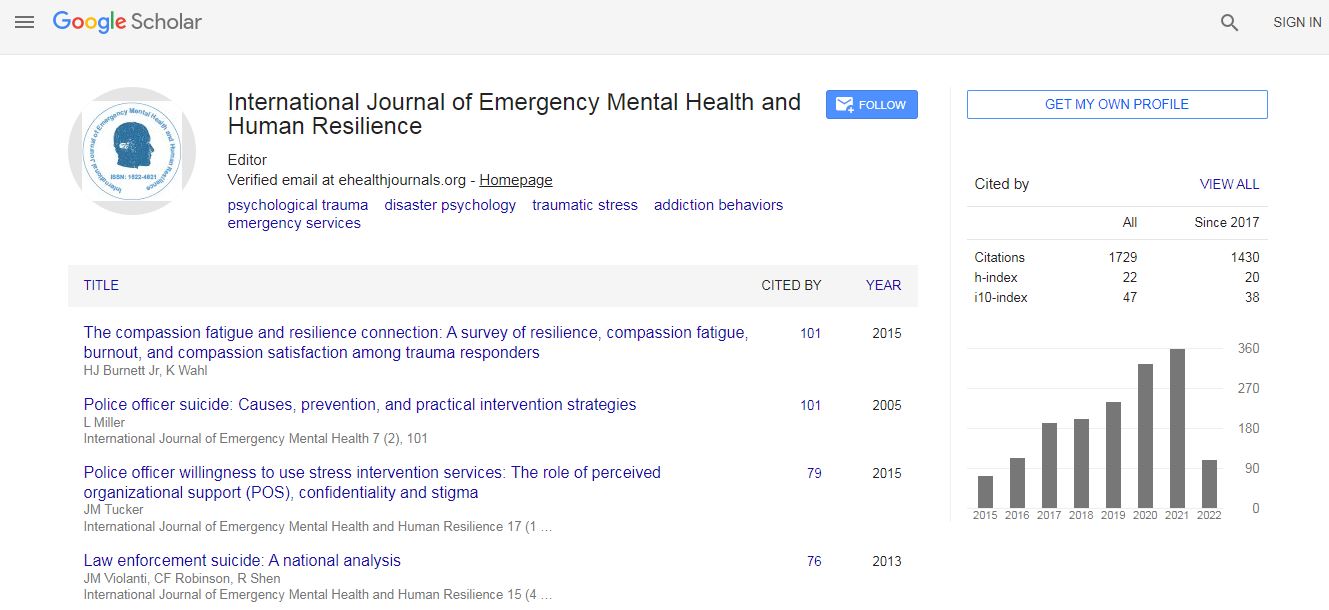Our Group organises 3000+ Global Conferenceseries Events every year across USA, Europe & Asia with support from 1000 more scientific Societies and Publishes 700+ Open Access Journals which contains over 50000 eminent personalities, reputed scientists as editorial board members.
Open Access Journals gaining more Readers and Citations
700 Journals and 15,000,000 Readers Each Journal is getting 25,000+ Readers
Google Scholar citation report
Citations : 4948
Indexed In
- Index Copernicus
- Google Scholar
- CiteFactor
- Publons
- Pubmed
- science Gate
- scispace
- world cat
Useful Links
Related Subjects
Share This Page
Relation of personal anxiety with other psychosocial factors in female population aged 25-64 in Russia/ Siberia: MONICA-psychosocial epidemiological study
3rd International Conference on Mental Health and Human Resilience
Gafarov V V, Panov D O, Gromova E A, Gagulin I V, Gafarova A V and Krymov E
Collaborative Laboratory of Cardiovascular Diseases Epidemiology SB RAMS, Russia FSBI Institute of Internal and Preventive Medicine, Russia
Posters & Accepted Abstracts: Int J Emerg Ment Health
Abstract
Purpose: To study prevalence of personal anxiety and its association with family stress and other psychosocial factors in female population aged 25-64 years in Russia. Methods: Under the third screening of the WHO Monica-psychosocial (MOPSY) program random representative sample of women aged 25-64 years (n=870) were surveyed in Novosibirsk. Anxiety levels were measured at the baseline by means of Spilberger├ó┬?┬?s test. Results: High level of personal anxiety (HLA) in female population of 25-64 years was 60.4%. The rate of poor sleep increased in three times in persons with HLA compared without anxiety (p<0.01). Major depression also had a peak in women with HLA and made up 13.5% (p<0.001). High values of vital exhaustion and hostility were more frequent for HLA compared to lower anxiety levels (p<0.01). 80% of those women with HLA had low indices of close contacts (p<0.001). There was increasing of conflicts in family up to 58.9% and changes in marital status with growth of anxiety levels (p<0.01). There was a tendency of increasing for job stress in those with HLA (29.5% with high and 52.6% with moderate job stress levels). Conclusion: The prevalence of HLA in female population 25-64 years in Russia is large. Women with HLA more likely have major depression, high hostility and vital exhaustion, poor sleep, low social support, high family and job stress.Biography
Email: bk03@aub.edu.lb

 Spanish
Spanish  Chinese
Chinese  Russian
Russian  German
German  French
French  Japanese
Japanese  Portuguese
Portuguese  Hindi
Hindi 